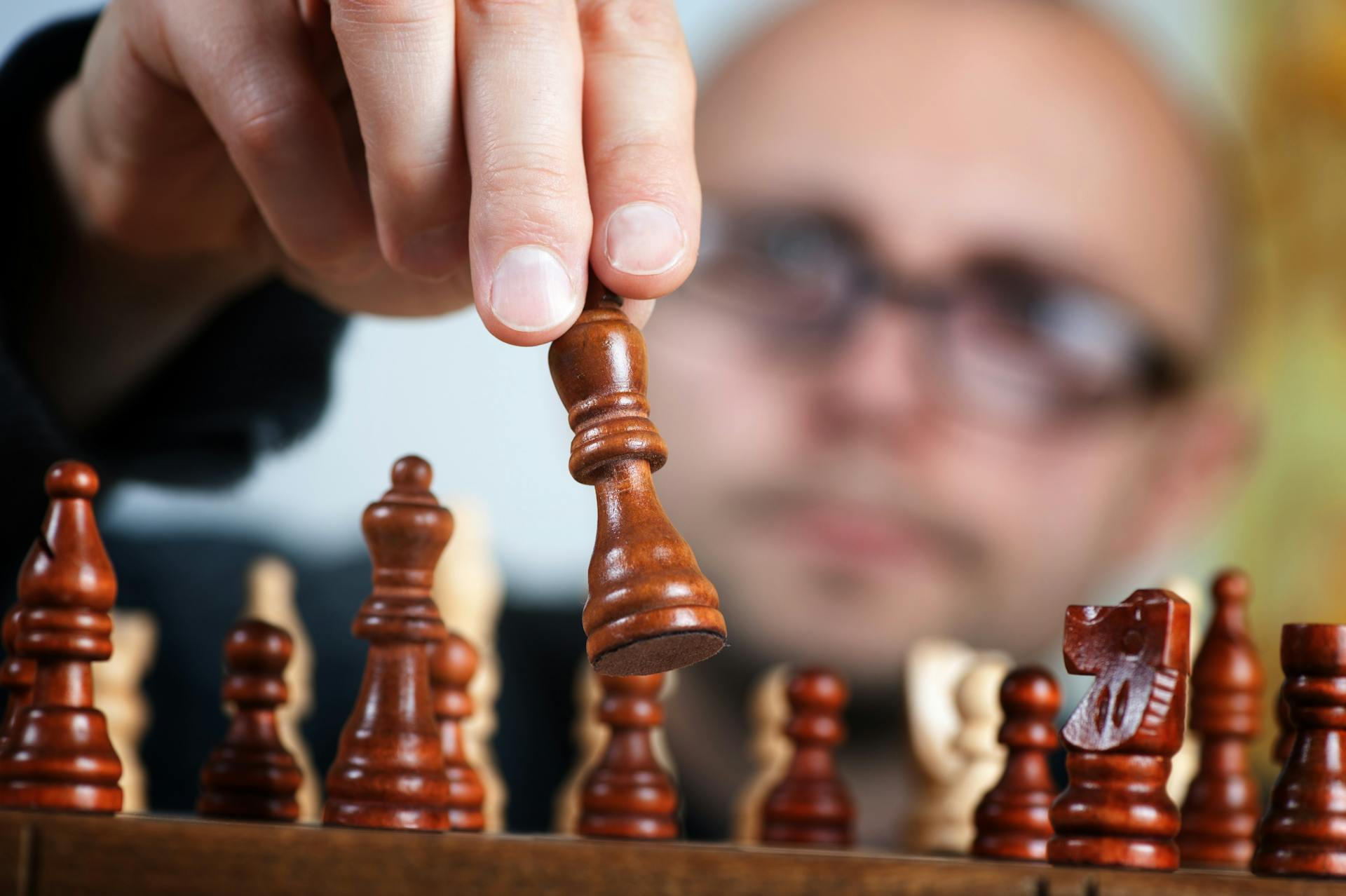Do you ever feel stuck when facing a difficult problem or decision? Problem-solving skills are crucial for navigating life’s challenges. Developing these abilities can boost your confidence, creativity, and critical thinking.
Fortunately, there are plenty of engaging games that can help sharpen your problem-solving prowess. These games encourage strategic thinking, pattern recognition, and creative solutions. Best of all, they’re enjoyable for people of all ages!
In this post, we’ll explore 36 problem-solving games you can play alone or with friends and family.
Logic and Deduction Games
These games focus on logical reasoning, deduction, and finding creative solutions to tricky problems.
1. Sudoku
Sudoku is a classic logic puzzle that involves filling a 9×9 grid with digits from 1 to 9. Each row, column, and 3×3 sub-grid must contain all digits without repetition. Start with the easier puzzles and work your way up to the diabolical ones.
2. Set
- Set is a real-mind bender that tests your pattern recognition skills.
- Players try to identify sets of three cards that are either all alike or all different in four specific features.
- It may sound simple, but it’ll make your brain sweat!
3. Zendo
According to a study by the University of Pennsylvania, playing games like Zendo can improve cognitive flexibility by up to 25%.
In Zendo, one player creates a rule using pyramid-shaped pieces. The other players must use deduction to figure out the secret rule and build structures that follow it.
4. Escape Room
In this game, teams are “locked” inside a room and must search for hidden clues, solve puzzles, and crack codes to escape before time runs out.
Escape rooms require intensive communication and collaboration as players analyze their surroundings for solutions. They exercise creativity, attention to detail, and logical reasoning skills.
5. Mastermind
A classic code-breaking game where one player creates a secret code of colored pegs, and the other has to use logic and deduction to crack the pattern through a series of guesses and feedback.
6. Quarto
Players try to get four game pieces in a row (vertically, horizontally, or diagonally) that all have a common attribute – either all the same color, height, shape or top type. Requires careful deduction of your opponent’s strategy.
7. LITS
In LITS (Last In Twisted Survival), players take turns placing irregularly shaped tiles to create a continuous loop path. Deduction skills are key to anticipating the best placements.
Strategy and Resource Management Games
Outsmart your opponents by making calculated moves and carefully managing your resources. These games foster long-term planning and risk assessment.
8. Chess
The ultimate classic strategy game, chess pits two armies against each other on an 8×8 board. Despite its simple rules, it offers incredible depth and complexity.
9. Settlers of Catan
| Game | Players | Age | Play Time |
|---|---|---|---|
| Settlers of Catan | 3-4 | 10+ | 60-120 mins |
In this award-winning game, players collect resources and strategically build settlements, cities, and roads to earn victory points. Trading and negotiation add an extra layer of challenge.
10. Seven Bridges
A tile-laying game where players build a network of bridges and canals, competing to create the most valuable estates in their merchants’ territories through calculated placement.
11. TZAAR
An abstract strategy game using cylindrical pieces on a grid board. Players aim to create lines and area majorities by tactically stacking and moving their pieces.
12. Santorini
Inspired by the Greek island, players compete to move their builders and construct a towering structure first, while blocking opponents’ paths through strategic placement.
13. Scavenger Hunt
Scavenger hunts get teams up and moving as they race to find or complete tasks from a list of creative prompts. They can be done indoors, outdoors, or even in a virtual format sharing photo/video proof.
Scavenger hunts encourage resourcefulness, observation skills, and teamwork as groups strategize the fastest way to acquire all the items or challenges.
14. Barter Puzzle
Much like the activity described, teams are given mixed-up jigsaw puzzles and must negotiate, trade pieces, and take on roles to reassemble their complete puzzle first.
It promotes deal-making abilities, resource allocation, patience, and cooperation toward a shared goal. The barter puzzle tests conflict resolution too as teams determine what trades are fair.
Spatial and Visual Puzzles
These mind-bending games will put your spatial reasoning and visual perception abilities to the test. Get ready to look at problems from new perspectives!
15. Blokus
In Blokus, players take turns placing tetromino-shaped pieces on a board, aiming to create one continuous line. The catch? Each new piece must touch another of the same color, but only at the corners. It sounds simple but rapidly becomes a visual and spatial challenge!
16. Rush Hour
In this sliding puzzle, you have to carefully maneuver vehicles out of a traffic jam by pushing them horizontally or vertically. Finding the right sequence of moves requires keen spatial awareness.
17. Ubongo
A study from Cambridge University found that spatial reasoning games like Ubongo can increase grey matter in the brain and boost problem-solving abilities.
Ubongo challenges players to recreate colorful geometric shapes using different tiles quickly. It’s a race against the clock and your opponents!
18. Laser Maze
Players aim laser beams through a maze using mirrors and other tools. Great for developing spatial visualization as you plot the laser paths.
19. Katamino
Using pentomino puzzle pieces of different shapes, players recreate 2D and 3D patterns, honing their spatial reasoning abilities.
20. Bamba
A bamboo-themed puzzle where players have to carefully remove carved rods from a stand without disturbing the remaining pieces.
21. Blind Drawing
Teammates take turns describing an image or shape while their blindfolded partners attempt to recreate it through drawing based solely on the verbal instructions provided.
It boosts clear communication abilities while working towards a shared visual representation.
Lovers of wordplay and linguistic puzzles, these games are for you! Get ready to stretch your vocabulary and decipher tricky clues.
22. Codenames
Two teams compete to make word associations from a shared pool of codenames on a grid. The clue-giver has to walk a fine line between being too vague or too obvious.
23. Bananagrams
- Bananagrams is a portable word game similar to Scrabble.
- Players race to build crossword grids from their letter tiles.
- Add some friendly competition to your next backyard BBQ or family gathering!
24. Boggle
In Boggle, you have to find as many words as possible from a random assortment of letters on a grid. It tests your vocabulary, pattern recognition, and ability to think quickly under pressure.
25. Wordsmith
Similar to Boggle, players use interconnected letter dice to form words, adding more complexity through a dice placement strategy.
26. Word Sweep
A fast-paced game where players slide letter tiles to spell words and cross them off a central grid before opponents.
27. Upwords
Think 3D Scrabble! Players stack their letters vertically and horizontally to form words above and below the playing field.
28. Truths and a Lie
One person shares three statements – two truths and one lie about themselves. The rest of the group must use questioning, reasoning, and people skills to deduce which statement is a lie. This icebreaker promotes listening, communication, and reading social cues.
Classic Pencil and Paper Games
No fancy equipment is needed! These timeless games can be played anytime, anywhere with just a pencil and paper.
29. Battleship
Two players take turns calling out coordinates and trying to locate and “sink” each other’s hidden ships on a grid. It combines deduction, strategic thinking, and a little luck.
30. Dots and Boxes
Google Featured Snippet (Rich Paragraph): Dots and Boxes is a simple territorial game where players take turns connecting dots to claim box spaces. Easy to learn but difficult to master, it’s a perfect mix of strategy and chance.
31. KenKen
KenKen puzzles provide a numerical logic challenge similar to sudoku. Fill in the grid with digits based on given mathematical operations to form a valid solution.
Physical/Hands-On Games
32. Human Knot
This classic team-building and problem-solving activity requires groups to form a human knot by reaching across and grabbing the hands of others in the circle. Without letting go, the team must work together to untangle themselves and form a circle again. It promotes communication, strategizing, and physical collaboration.
The human knot challenges groups to think critically about every move while supporting each other.
33. Build a Tower
Splitting into teams, groups compete to build the tallest freestanding tower using limited supplies like spaghetti, tape, marshmallows, etc. This hands-on challenge requires strategic planning, design thinking, experimentation, and great communication/teamwork to achieve the loftiest tower possible before time runs out.
34. Pyramids
Teams form a pyramid shape with people standing on different levels. The challenge involves reforming the pyramid by only allowing certain people to move or swap levels while maintaining the pyramid structure. It requires strategic coordination and physical teamwork.
Creative Thinking Games
35. Dumbest Idea
First Teams rapidly come up with as many “dumb” ideas to solve a particular problem as possible. Once the silly solutions are out, they analyze which ideas contain promising kernels of ingenuity. This game encourages wild brainstorming, open-mindedness, and looking at challenges from new perspectives.
36. Lean Coffee
A structured but agenda-less format where participants gather and build an impromptu meeting agenda by collectively voting on the most pressing issues, questions, or topics they want to explore through discussion that day. It crowdsources priorities and fosters an environment of learning and knowledge sharing.
Logic and Deduction Games Quiz
1. Which of the following games is a logic-based puzzle involving a 9×9 grid of numbers?
2. In which game do players have to deduce a secret rule created by another player using pyramid-shaped pieces?
3. Which of the following is a game that involves trying to crack a secret code of colored pegs?
4. Which game is often played in a “locked” room, requiring teams to solve puzzles and find clues to escape?
5. Which word game challenges players to make word associations from a grid of codenames?
TL;DR
Problem-solving games are a fun, engaging way to sharpen your critical thinking abilities. From logic puzzles to word games to classic paper-and-pencil challenges, there’s something for everyone!
Playing these 36 games will exercise your deductive reasoning, strategic planning, spatial awareness, vocabulary, and pattern recognition skills. Get your family and friends involved for an enjoyable mental workout.
Q&A
Q: Which games are best for developing strategic thinking? A: Games like Chess, Settlers of Catan, and Pandemic require players to plan several moves ahead and carefully manage their resources for long-term success.
Q: Are there good problem-solving options for kids?
A: Absolutely! Many games like Set, Rush Hour, Blokus, and Codenames are suitable for children as young as 8-10 years old. They’re a great way to build critical thinking skills from an early age.
Q: How can these games benefit adults? A: For adults, problem-solving games provide an enjoyable mental challenge and break from daily routines. They can improve focus, creativity, and cognitive flexibility while relieving stress.
Q: Which games work well for solo play? A: Sudoku, KenKen, Ubongo, and Rush Hour are all excellent single-player options to exercise your brain anytime, anywhere.
Q: How do I get started with problem-solving games? A: Start with simpler games or puzzles in genres that interest you, then progressively try more difficult versions. Many games provide tutorials to ease you in. Playing with others is also a great way to learn.





